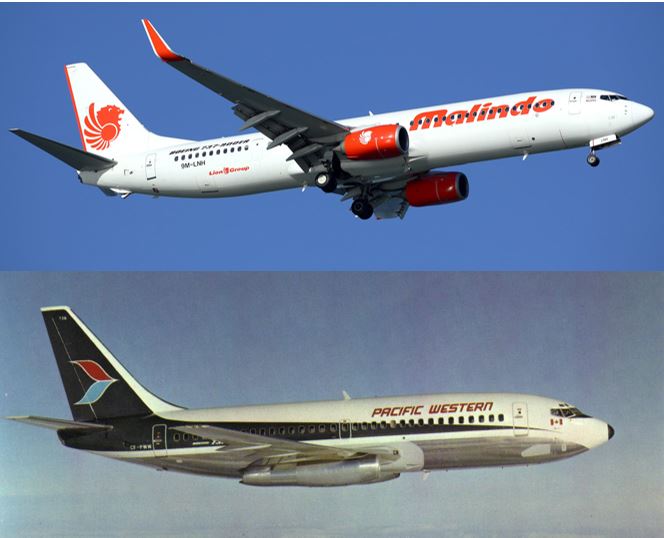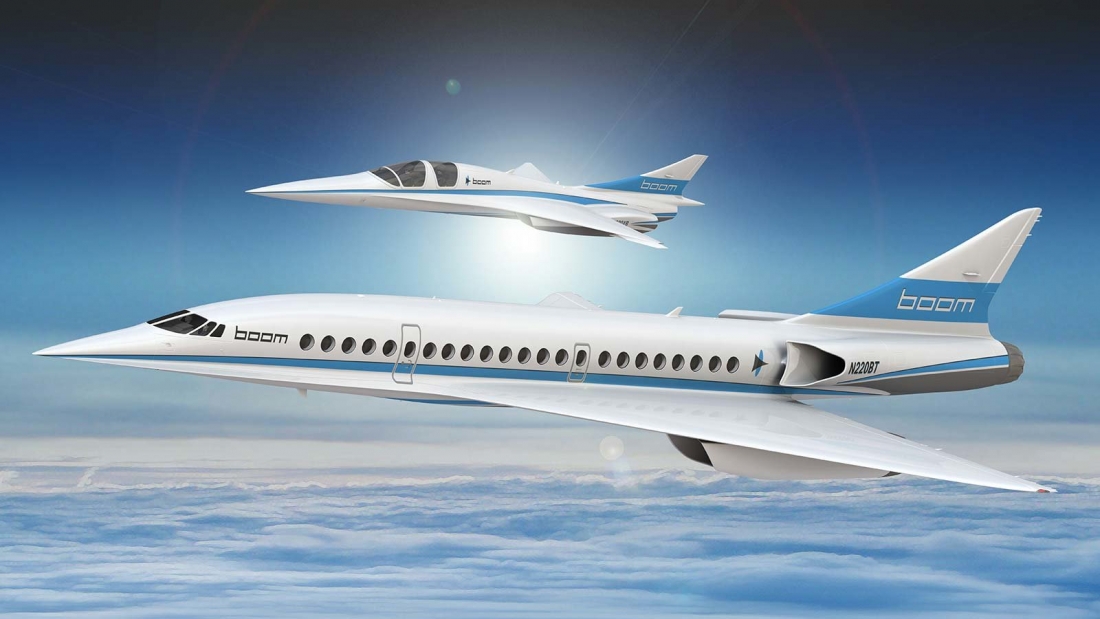Commercial aviation technology has pretty much stagnated for the last 50 years. For example, the Boeing 737 is one of the most popular commercial airliners in service today. That plane, in basically current form, took its maiden flight 55 years ago in 1968 (or was it 69?). In 1968, Neil Armstrong hadn’t walked on the moon yet & Russia was still winning the space race. Woodstock wouldn’t happen for another year. America was still fighting in Vietnam. 1968 is the same year that MLK Jr. and JFK were both assassinated. That era seems like a lifetime ago, and it is incredible that the first 50 years of aviation saw astronomical growth from the wright brothers’ first powered & manned flight (in a glorified paper airplane with a lawnmower engine bolted to a ceiling fan) in 1903 all the way to the first supersonic flight by legend Chuck Yeager in 1947 (I highly recommend the book “The Right Stuff” by Tom Wolff). In the last 50 years, however, improvements have been stifled. Between 1970 and today today, we haven’t seen any breakthrough aerospace technologies for commercial aviation, or really even for military aviation technology. We’ve mostly just seen upgraded electronics, composite and materials engineering upgrades, improved-but-not-really-new propulsion technologies, and stricter safety modifications. But very little has changed about an airplane’s flight path, overall shape, and they still pretty much look the same as they did in 1970.

This is all about to change. In my next few articles, I’ll cover a few new breakthroughs from reusable rockets, to supersonic commercial flight, to drone taxis, commercial electric flight, and how some of these may force the 737 to realize its just another boomer technology that needs to retire. More in depth analysis on each of these topics is coming.

Chuck Yeager was a badass. He started his career as an aircraft mechanic in 1941 and soon enlisted as a private in the USAF in WWII. In his second mission, his P-51 Mustang was shot down over France. He escaped back to safety, and was given a new plane. He went on to shoot down eleven and a half planes (the other half-credit goes to the pilot who assisted him). Five of these were in the same day, and of those, two were made without firing a single shot. Twice he got into firing position and the pilots of the enemy planes bailed before he could get a shot off. After the war, he became a test pilot for the National Advisory Committee of Aeronautics (NACA, rebranded today as NASA) flying their experimental or “X” planes. On October 14th, 1947, in his 50th flight in the Bell XB-1, he cut the tow cord from the Boeing B-29 which brought him up to altitude, ignited his rockets, and jetted up to Mach 1.06 at 43,000 feet (1.06 times the speed of sound). He is the first credited with doing so in level flight (some German WWII pilots claim to have broken the sound barrier in a dive, but it is unlikely given the critical drag point as Mach # increases. He then went on to attempt a Mach 2.5 flight in 1953, but at Mach 2.44 he accidentally discovered a new phenomena called “Inertia Coupling” by losing control of his plane at 1,850 miles per hour. Remarkably, after dropping from 50,000 to 30,000 feet in less than a minute, he regained control and landed his plane safely.
Just 22 years after Yeager’s first sonic boom, in 1969, the technology required to break the sound barrier had reached the mainstream. The famed Concorde took to the skies. Powered by two turbo-jet engines and with a delta wing configuration, this plane was capable of reaching Mach 2, or twice the speed of sound. As a marketing stunt, a Concorde was launched from London at the same time as a a traditional subsonic passenger plane took off from NYC. They raced to each others’ starting points. The Concorde was so much faster that it landed in New York, refueled, and flew back, and ultimately beat the traditional subsonic plane to land in London. This was a game changer, meaning that passengers could now travel at more than twice the speed they used to, all over the globe.

The Concorde wasn’t perfect, however. The Concorde was loud – at least, that is the most cited reason for why the Concorde was grounded after just over 25 years of service in 2003. A sonic boom is a symptom of breaking the sound barrier. to an observer on the ground, it sounds like lightning, but louder, roughly as loud as a chainsaw at full throttle held up to your ear. This, however, was not the reason for the retirement of this legendary aircraft. The truth is, it was expensive to fly, and expensive to maintain.
The Concorde was primarily marketed towards first class customers. With high ticket prices, they could afford to keep the plane in the sky and draw a profit. Tickets were so expensive that they could make profit on just a 40% load factor. That sounds like a great business plan on their part, until you realize that they hardly ever filled a Concorde more than halfway, and it was typically only between 30-40% occupied. Towards the end of its life, they began to bring ticket prices down so that the average consumer could fly in the Concorde, and this was ultimately the most successful year for the Concorde, but unfortunately it was too late and the planes were set for the chopping block.
But there is hope for commercial flight above the speed of sound. A new company, called Boom Supersonic (the name of the company needs no explanation) has a contract with United to purchase 15 of its new supersonic airliners, hopefully beginning to carry passengers by 2029. Why will it work this time when it didn’t work before? Well, Boom has two things going for it: First they have technology advancements on their side, and two, they have a “fuck-you” attitude.
A lot has changed in both the materials and propulsion engineering field. Jet and turbojet engines have gotten a lot more efficient, and material engineers found out about this stuff called carbon fiber. An increase in propulsive efficiency decreases the cost of fuel to travel a certain distance at a certain speed. This makes it less expensive to fly for both the airline and the passenger. Carbon fiber composite as well as kevlar composite definitely look sexy, but what makes them so useful as aerospace materials? Their material properties allow them to be extremely light, while remaining extremely strong. Carbon fiber resists deformation about 70-80% as well as steel, but it is only 20% of the weight for the same volume. Additionally, running thin strips of metal through carbon fiber “composite” materials can allow you to tune your material properties accordingly. So what is this carbon fiber stuff? Carbon filaments are woven into a blanket-like shape, and then placed into a mold. An epoxy is soaked into the filament blanket, and allowed to harden. The woven structure prevents pure compressive or tensile deformation, while the epoxy/resin resists bending. Adding multiple layers or metal spars can increase the bending resistance. These lightweight composite materials can drastically reduce the weight of an aircraft. This in turn reduces the wing sizing requirement, which reduces drag, which allows the plane to fly even faster.

These two technologies alone could almost bring back commercial flight above the speed of sound, but there’s one more problem: noise restrictions. Nearly every developed country on earth has outlawed civilian supersonic-flight over land. Its just too disturbing for the people on the ground. Imaging living next to JFK airport and hearing sonic booms every 90 seconds at all hours of the day. Houses under every common flight path would plummet in value! So how does Boom Supersonic tackle this noisy pitfall of the Concorde? It doesn’t even make an attempt to. Their “fuck-you” plan of attack is to simply just fly over oceans. NYC to London. California to Tokyo with a layover in Hawaii. These are designed to be ocean crossers. And if they maintain a low manufacturing and operating cost, this could prove to be an exceptionally profitable endeavor. The appeal for a working class person to be able to afford to hop on a plane in NY and be in London in under two hours is exciting. This technology of commercial supersonic aviation makes the world a little bit smaller, and brings us all a little bit closer together.



Leave A Comment